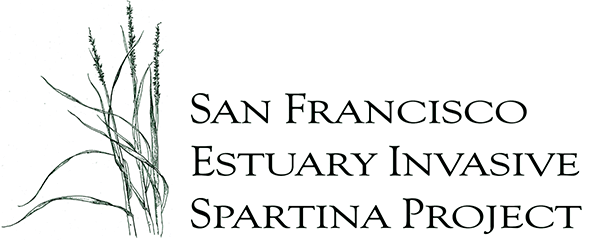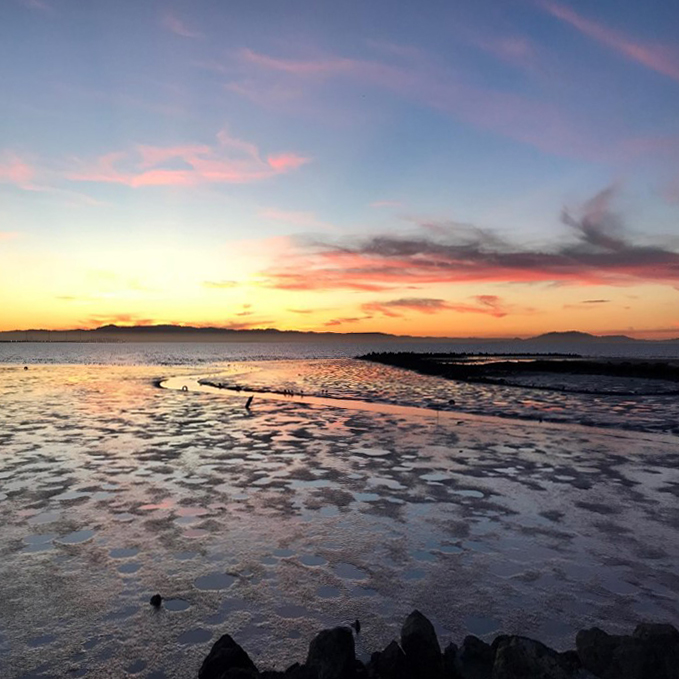
The San Francisco Estuary Invasive Spartina Project (ISP) works toward the eradication of invasive Spartina (cordgrass), protecting native tidal marshes and mudflats across the Bay Area. This project is a key step in baywide wetland restoration, helps implement well-vetted regional and state plans to restore San Francisco Bay marshes and mudflat habitat, and build natural ecological functions that increase the Bay’s resilience to climate change.
Some of these plans include the FWS Tidal Marsh Recovery Plan, San Francisco Estuary Institute’s Adaptation Atlas, Coastal Conservancy’s Strategic Plan, California Natural Resources Agency Natural and Working Lands Report for climate change preparedness, and the EPA’s San Francisco Estuary Blueprint recommendations.
Healthy native tidal wetlands provide multiple benefits by serving as habitat for diverse fish and wildlife species. The eradication of invasive Spartina is a critical action in protecting the major investments to native tidal wetland restoration efforts and sea level rise adaptation in the Bay.
Thank you for supporting our efforts and this critical ongoing work!
Treatment and Restoration:
As the 2022 treatment season draws to a close, our team is gratified to see the results of many years of hard work. Many of the ten heavily infested sites that were approved for treatment since 2018 have now reached a point where they are able to be treated by just a small team of applicators in a single morning as opposed to a large mobilization effort over multiple days. ISP Treatment Manager Drew Kerr explains, “When we took on these large infestations, we were able to apply our years of experience and improved technologies to reduce the hybrid Spartina much more quickly than in the earlier days of the ISP, beginning the restoration process within the marshes and protecting surrounding areas against propagule spread.”
Through a holistic approach, the ISP team has been carefully phasing treatment and restoration to protect Ridgway’s rails and restore nesting habitat at more than 150 sites Bay-wide, with excellent results. For instance, at the Bunker Marsh site in Robert’s Landing (San Leandro), our revegetation team has seen planted marsh gumplant successfully root, spread, and rebuild habitat. This past year, we targeted plantings in the transition zone between wetlands and uplands. In 2023, we plan to continue planting transition zones at several sites, including Robert’s Landing in San Leandro and Cogswell Marsh and the Eden Landing Ecological Reserve, both along the Hayward Regional Shoreline.
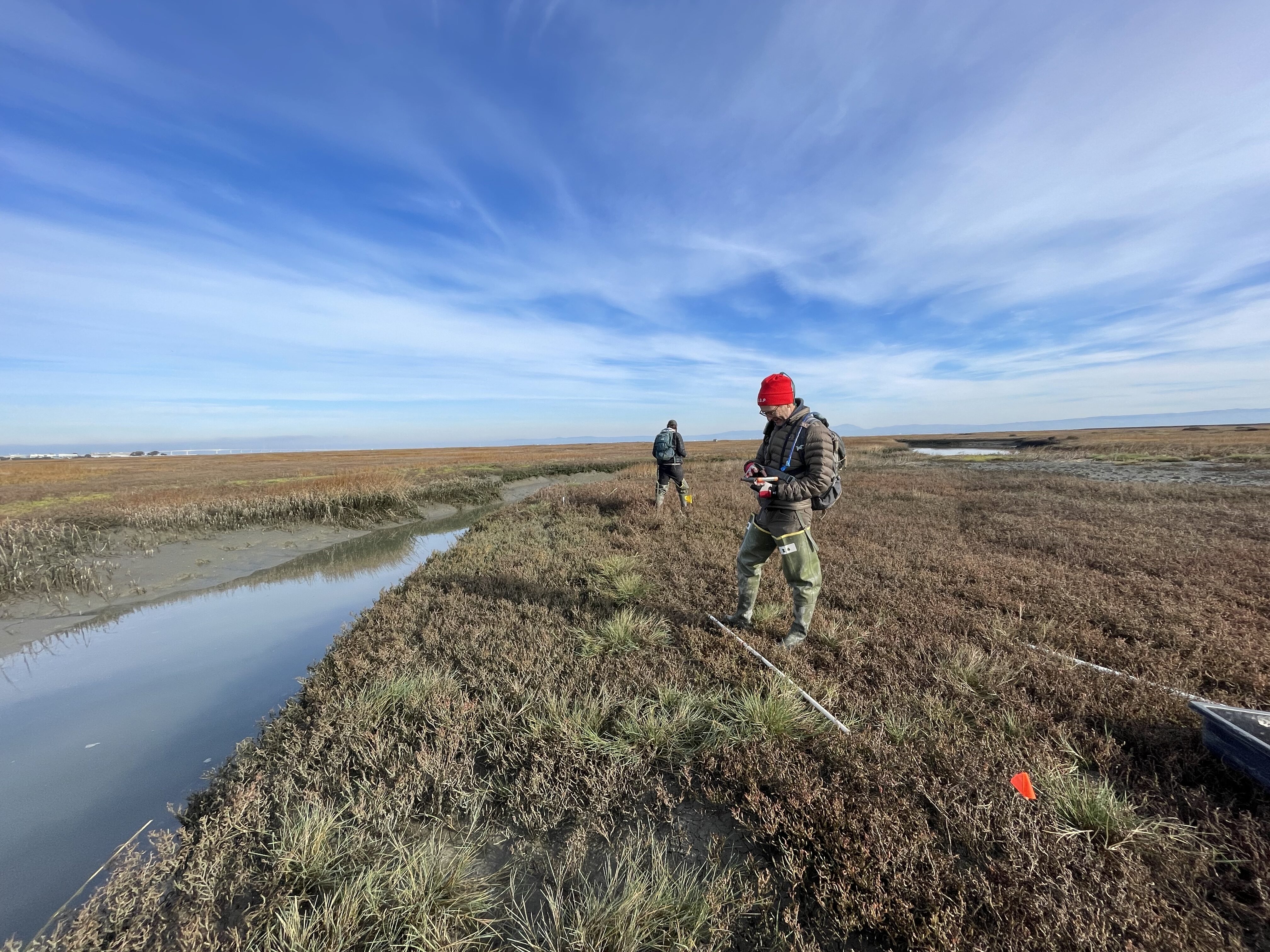
Featured Partner: East Bay Regional Park District (EBRPD)
This project would never be possible without our network of project partners, agencies, and community groups. This issue, we’re highlighting one of our partnering agencies, the East Bay Regional Park District (EBRPD).
With more than 125,000 acres of parks and preserves in Alameda and Contra Costa counties, it’s no surprise that the EBRPD manages many marshes, mudflats, and creeks that have been infested by non-native Spartina. Fortunately, the district takes a leading role in eradicating the invasive weed from the Bay, working with contractors to treat infestations in large marsh complexes in Hayward, Martin Luther King, Jr. and Oyster Bay regional shorelines, Point Pinole Regional Park, and Eastshore State Park.
In recent years, the ISP team has been granted access to remove invasive Spartina from the Cogswell Complex in Hayward, expanding efforts to protect the wetlands from this pest plant. By removing the invasion at Cogswell, we also protect neighboring marshlands in the CDFW Eden Landing Ecological Reserve and the South Bay Salt Ponds Restoration Project from the risk of invasion and degradation.
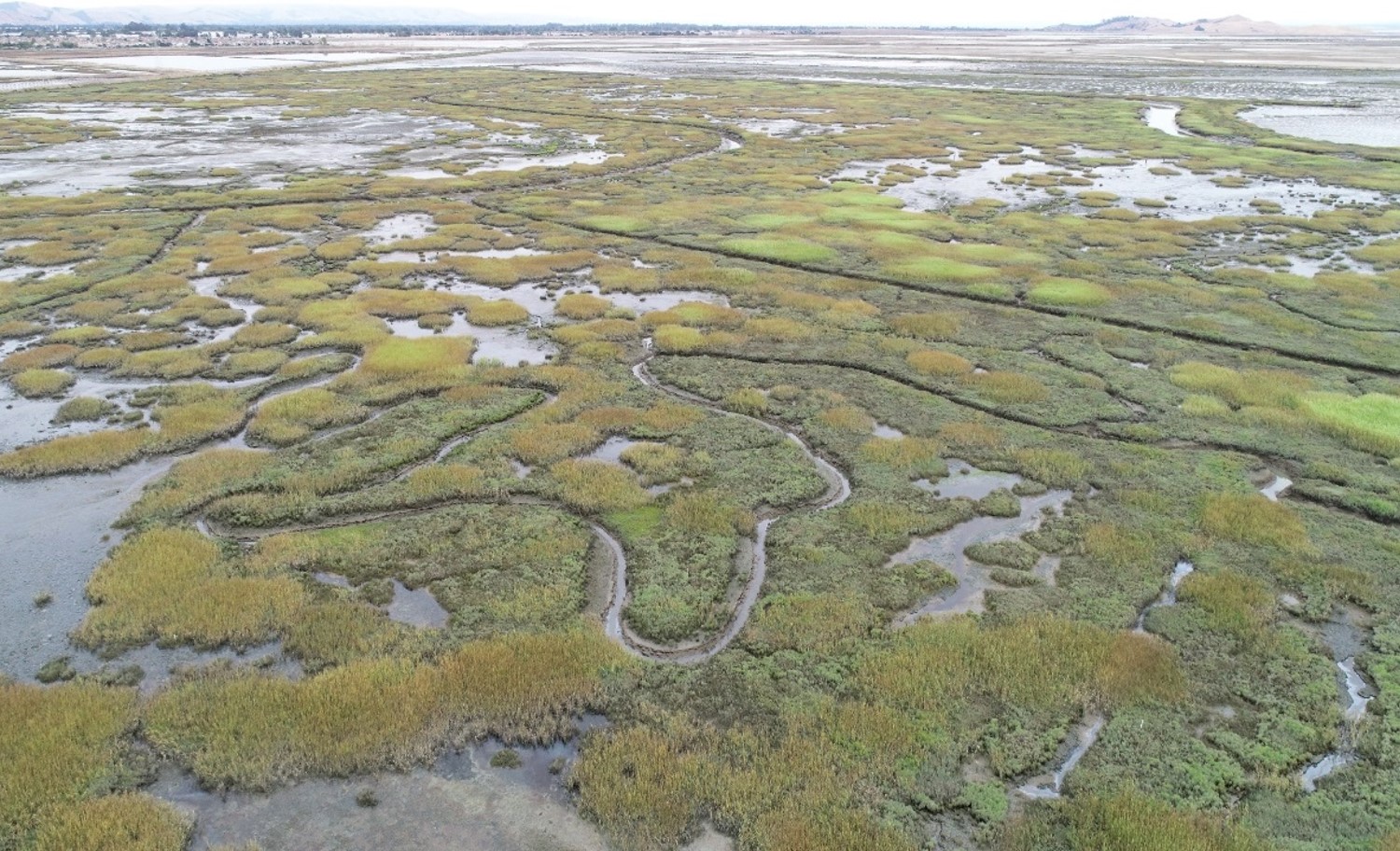
Outreach:
In October, the California Native Plant Society hosted its triennial conference in San Jose, gathering 1,200 attendees. A session on invasive plant impacts featured two presentations on Spartina; the historical perspective on the invasion of San Francisco Bay from Deborah Ayres (CNPS El Dorado Chapter, University of California, Davis (retired)), and a report on progress in tidal marsh restoration by the ISP partners from Jeanne Hammond and Brian Ort (both Olofson Environmental, Inc.)
On November 14, Drew Kerr (Kerr Ecological Solutions; ISP Treatment Program Manager) and Simon Gunner (Olofson Environmental; ISP Senior Botanist) gave a presentation to the California Native Plant Society, Marin Chapter, on the Invasive Spartina Project. A recording of this talk is available on the CNPS Marin Chapter YouTube channel.
This fall, ISP outreach staff completed our slate of conservation corps training sessions for the 2022 calendar year. We hosted a full day of plant management basics and tool talks for the San Jose Conservation Corps crew members, with instructors from the Midpeninsula Regional Open Space District, Grassroots Ecology, and Ecological Concerns, Inc. Trainers from East Bay Regional Park District led several classes for rising crew leads and crew leaders with Oakland Civicorps: a two-part series on plant ID and riparian restoration, and a half-day intensive on crafting a SMART plan for invasive plant management and mapping.
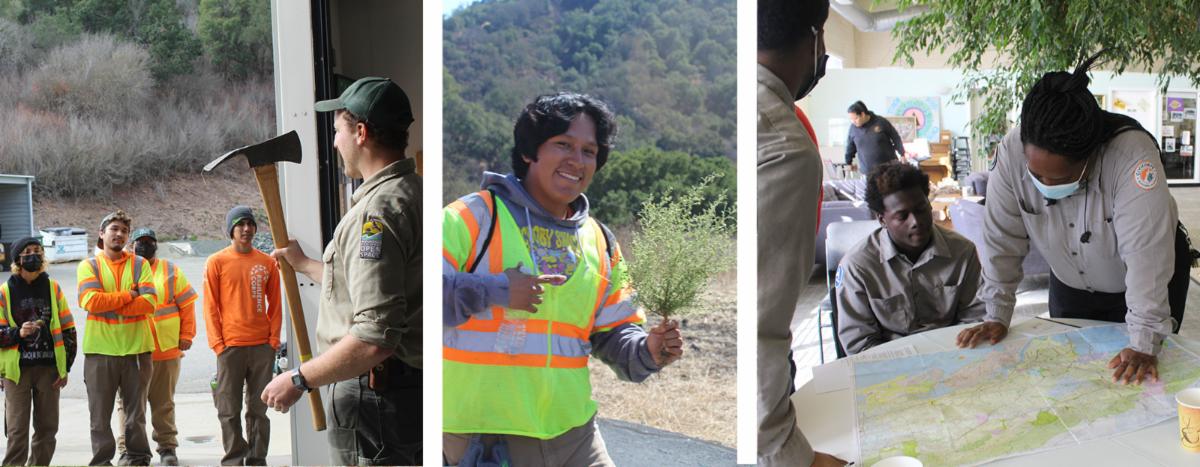
Thank you!
Thanks to the wide range of collaborating organizations that make this work possible including: US Fish and Wildlife Service, State Coastal Conservancy, East Bay Regional Park District, CA Dept of Fish and Wildlife, Port of Oakland, SF Bay Joint Venture, California Invasive Plant Council (Cal-IPC), Olofson Environmental, Inc. (OEI), San Francisco Bay Restoration Authority, Valley Water, and more than 150 project landowners, partners, and contractors. Together, we are working together to protect the Bay’s shorelines.
